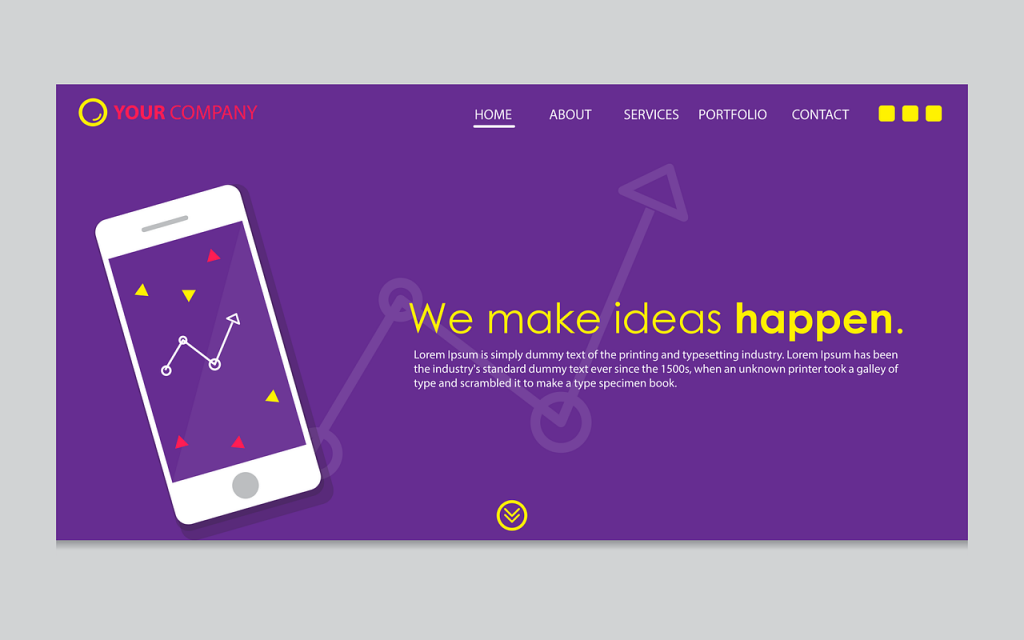It is important that you know what a landing page is and why it is significant to your business. As you get yourself into SEO, digital marketing, and paid search advertising, most likely, you will encounter new words, phrases, or concepts.
If you have not, then you will most likely be wondering what the role of landing pages in your digital marketing strategy is. Creating a landing page seems to be an easy task, and it could be. However, you need to be aware that landing pages are extremely important in acquiring conversions.
What is a Landing Page?
Generally, a landing page is a page where the consumer lands. While it could be any web page, in the marketing world, it is commonly a standalone page. It is separate from your homepage or any other web pages and it serves a single purpose.
After making promises from your content, you need to follow it up with a landing page. In other words, this is important in persuading your visitor to become your customer. There are all sorts of things that you can do on your landing page, such as offering special deals, making trades, as well as providing information in exchange for providing contact information.
Once the visitor clicks the landing page, they will be taken to a different page, such as an eCommerce site or any page that is lead generation based. Typically, landing pages that generate leads will offer various items such as webinar registration, contest, eBook free trials, etc. in exchange for the submission of contact information.
An excellent landing page will do its best to convince any potential client that it is worth providing their personal details in exchange for the things that you offer. Landing pages can be accessed through your company website or through a search, increasing the chances that your potential customer will land on it.
It is not necessary that you only have one landing page or create one landing page at a time. The fact is, marketing experts recommend that you should have several landing pages which target various types of customers.
What Are the Different Types of Landing Pages?
Generally, landing pages should be able to make your post-click sequence successful. This can be accomplished by proving to your visitor that they have landed in the right place. Sometimes product pages or busy homepages can potentially make the situation more complicated.
Landing pages will typically reveal the result from the user’s click-through. Creating a landing page can help in refining and improving your visitor interactions as well as improve their chances for conversion. It can guarantee that you are getting more from your PPC spend.
Keep in mind that you have already paid for this click and creating a landing page can make it worthwhile. You can further improve the chances of conversions by using the right kind of landing page. Let us look into the different types of landing pages and what their uses are.
What is the Difference Between a Landing Page and a Website Homepage?

You might be wondering why you need to create a landing page when your main objective is to lead your visitors to your homepage. This is because obtaining traffic on your home page is great, but it does not guarantee that it can lead to a conversion, compared to a landing page, which is designed to maximize conversions.
Home pages typically include different types of information and encourage visitors to explore a variety of different locations. Once the visitor arrives on your homepage, they have one particular goal in mind.
However, they may get discouraged after finding out that they have to go through various products and services options first. The main goal of the homepage is to lead visitors to the other pages so they can find the information they need. With landing pages, you can directly lead the user to the page that they want, which is how they maximize conversions.
A homepage is more general in purpose, while a landing page serves a more specific purpose. While a homepage draws users further into your website by providing them different options, a landing page only offers a single call to action.
Landing Pages for Lead Generation
A lead-generation landing page, also known as a lead capture landing page, is designed for gathering leads through a data capture form. This type of landing page is very flexible. Oftentimes, they are used right in the heart of the sales funnel. During this time, the consumer is trying to evaluate your offerings and decide whether to walk away or proceed. It can be considered both a reward and a request at the same time.
The reward is the particular offer that you are promoting so that you can get leads. The request refers to the information that you were asking from them through the form. It is very important that the reward and the request should be well balanced. This means that whatever you are promoting should be worthy of the information that you ask from your customers.
Landing Page for Click-Through
In contrast to the lead-generation landing page, which is dependent on using a form, the click-through landing page does not need any forms at all. It will act as the middleman between your advertisement and the page that you want to lead your customers into. For instance, it is used for linking an advertisement to a shopping cart. It only needs a brief and simple explanation and a daring call to action along with a link to its ultimate destination.
Squeeze Page as a Landing Page

The goal of the squeeze page is to gather data, which functions similarly to a lead-generation page. But in contrast to a lead-generation page, this page is used closely on the sales funnel and its only intention is to collect email addresses that can be added to the general mailing list.
These pages are brief and basic, yet they include strong headlines and less content. Aside from the short form, it should also include a link that will lead the customer to the succeeding step as well as an exit option in case the customer does not want to proceed.
Sales Page as a Landing Page
A sales page is very difficult to design. Keep in mind that on this page, you are no longer looking for leads. This page is the one that you need at the bottom of the funnel. You need to convince the customer to purchase, which is contrary to the request and reward combination.
When designing this page, you have to be delicate and completely understand what your customer needs as well as their status in the sales journey. During this time, you could either turn your customer away by trying to sell too hard to them or you could choose to undersell and lose the sale. That is why it is important to incorporate good old-fashioned salesmanship into your design and communication strategies.
The length of this page varies depending on the product or service that you offer and what are the valuable things that you need to explain to your customers. No matter how short or long the page is, it is important that it contains a detailed pitch that clearly states the value, with the goal of attracting the customer to click that button and purchase the item.
A Splash Page as a Landing Page
Splash pages are considered the most common type of landing page. It can be inserted anywhere in your sales funnel. Generally, it only includes one or two bold images, very brief copy, as well as basic communication such as a yes or no request or an announcement.
Your visitors might be asked about their age or language preferences before they can enter your website. This page is not designed to generate leads or gather data. Its main objective is to offer basic information to your users before they can proceed to your website.
An Infomercial as a Landing Page
You might consider infomercials as an ancient type of advertising; however, a lot of businesses are still incorporating them in their sales strategies into their digital techniques, most specifically, in the form of landing pages. There is a significant difference between infomercial landing pages and squeeze or lead-generation pages. While the latter is known for their conciseness, infomercials create an elaborate story to keep the visitors scrolling and eventually get them to make a purchase.
Viral Landing Pages

The main objective of viral landing pages is to create brand awareness. Although they include links to a certain company website or any other web page, they are usually presented in a casual and conservative manner. The major component here is the content, which should be fun or informative enough to engage the visitor and probably hook them to share the page. The content can be in different forms such as images, videos, a written copy, or games.
Microsites as Landing Pages
Just as the name suggests, a microsite is actually a mini-website. It is generally created for a particular campaign or with a specific goal in mind. Although it contains more than one page, it is still considered a landing page since it is designed for one particular aspect of sales and marketing efforts.
If you need help in creating landing pages, then you can consult Agile Development. Just visit our website at https://agiledev.org/ or reach out that so we can talk about how to get your business noticed online.

Recent Comments